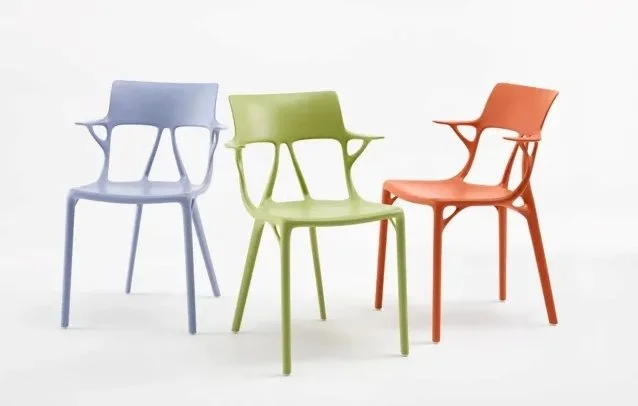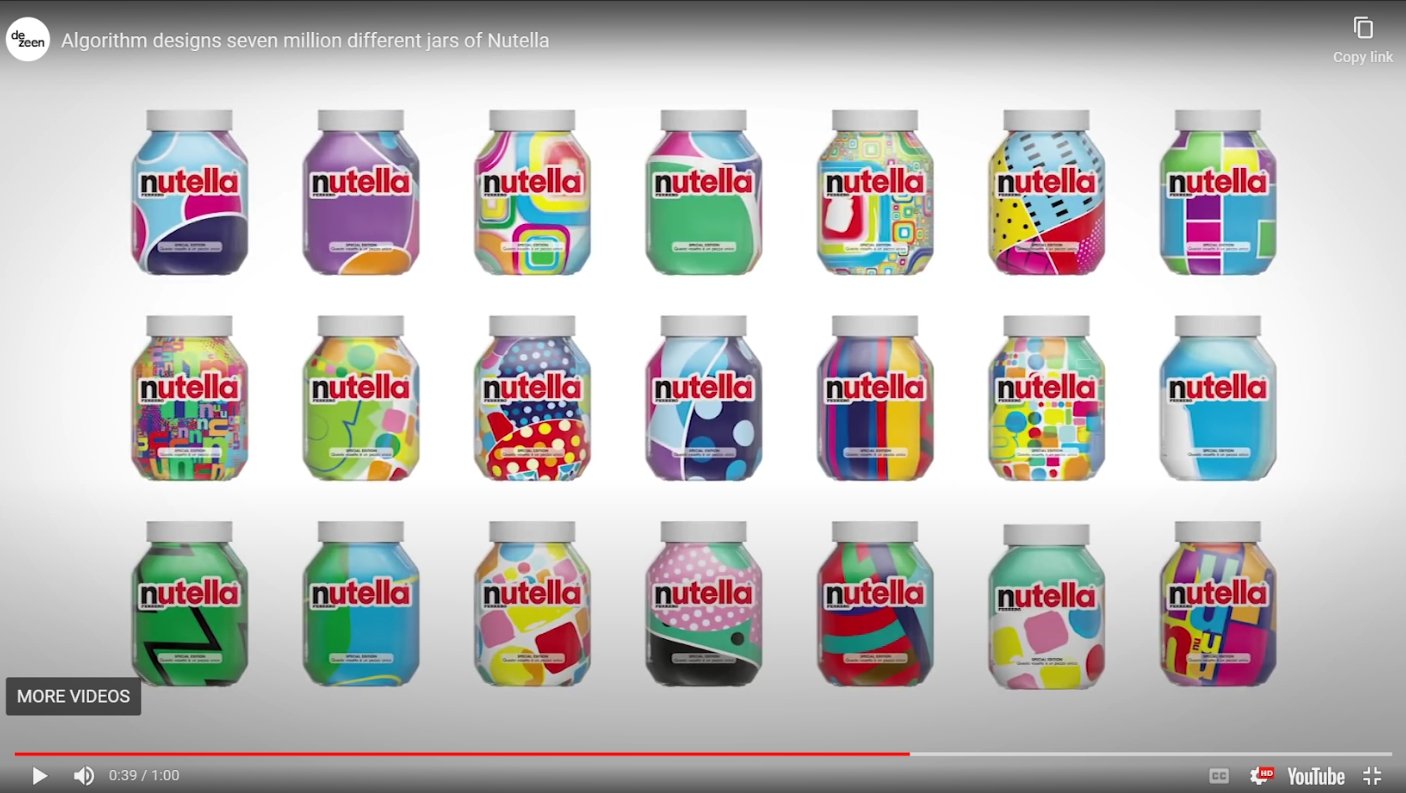A Plausible Future: The AI / Designer Partnership
"AI may not replace designers themselves, but designers will be replaced by others who embrace AI" [1]. This bold statement, made by Devlin Peck in early 2024, captures AI's transformative impact on creative industries. As AI tools become increasingly integrated into the design process, they fundamentally reshape how designers work and innovate.
To understand this shift, it’s important to clarify what we mean by AI. The most commonly used definition is "artificial intelligence," which describes the ability of computers to perform tasks that typically require human intelligence [2]. However, former IBM CEO Ginni Rometty offers an alternative perspective, describing AI as “augmented intelligence,” a term that emphasizes its role in enhancing human capabilities rather than replacing them [3]. This distinction reframes AI as a powerful tool for designers, dispelling the "magic-tech" mindset often associated with the term.
The future of design lies in a collaborative partnership between AI and human creativity. By acting as a tool to accelerate innovation, optimize processes, and unlock new possibilities, AI enhances, rather than diminishes, the role of human ingenuity. This symbiosis offers a glimpse into a design landscape where technology and creativity converge to push the boundaries of what’s possible.
The following two examples showcase how AI can elevate design by producing results that would be impractical or impossible through human effort alone.
In 2017, Nutella collaborated with a design agency to create seven million uniquely labeled jars of their product. They did this by using an algorithm that pulled dozens of patterns and colors from a database to “create seven million different versions of Nutella’s graphic identity” [9].
Algorithm designs seven million different jars of Nutella. (Source: dezeen YouTube Video, 39-second mark)
In 2020, Kartell partnered with Philippe Starck to create an entirely AI-designed chair by using the prompt: “How can we rest our bodies using the least amount of material?” [5]. The result was a chair unlike any that had been created and yet was highly effective.
Generative AI-designed chair. (Source: PNY.)
These projects demonstrate how AI empowers designers to push creative boundaries and achieve remarkable results.
On the other side of the spectrum, two of the sources I used for this article were explicitly written by AI: [2] and [12]. While these examples demonstrate the utility of AI in generating quick drafts, they also highlight its limitations. AI outputs often reflect the average quality of its input, making it crucial for designers to go beyond accepting AI-generated content at face value.
At times, I find myself tempted to rely on AI for every task requiring writing. While slapping a prompt into ChatGPT for any topic produces words on the topic, they lack the feel and tone that I want to convey. The word vomit is just that, and while it does an okay job, it won’t help me achieve the success or influence I need to make a difference. This underscores the importance of using AI as a starting point—a launching pad for future iterations rather than a one-size-fits-all solution. Designers should aim to refine and elevate AI outputs to ensure their work stands out and makes a lasting impact [13].
When considering using AI tools in design, an important decision is deciding on which tool is best. Similar to how a carpenter chooses between a screwdriver and a saw depending on the job required, AI tools also have specializations that need to be considered. Among the most popular is ChatGPT, which receives an estimated 3 billion visits per month. In my research, there are many other options as well that all have a different flavor, from being designed specifically for engineers, Leo [6], to text-to-image generators, Dall-E 3 and MidJourney [1], to text-based text generators, ChatGPT [1], and many more [1]. A simple internet search for “____ AI tool” can lead to a wealth of resources for designers exploring specific needs.
The question then arises “What activities can AI tools help the designer engage in?” Much like the mighty pen and paper, AI tools can help the designer in almost every task. This includes but is not limited to, items such as:
Brainstorming HMW statements
Creating personas
Creating renders from sketches
Coding assistance
Answer technical questions
Editing writing
Generative design [1]
Optimization [2]
Data analysis [2]
Predictive analytics [2]
Create multiple variants [3]
Personalize the user experience [4]
Provide real-time analytics to systems that previously required extensive computation time [7]
Create mechanical drawings [11]
Create process diagram sheets [11]
Create 3D models [7], [11]
Program synthesis (turning human instructions into computer instructions) [11]
Beyond streamlining individual design tasks, AI tools are significantly impacting design by enhancing creativity, identifying user preferences, creating multiple design variants, and personalizing user experiences. Acting as a virtual assistant, AI handles routine tasks and allows designers to focus on idea generation. These tools can analyze user behavior to inform design choices, generate numerous design variations, and create a more humanized and personalized user experience. Additionally, AI-driven platforms enable non-professionals to create professional designs, making design more accessible. [4]
Expanding beyond transforming the individual design processes, AI tools are part of a broader evolution in how industries operate. This shift goes beyond enhancing creativity and user experiences—it represents a fundamental change in the way we approach work, ushering in the era of Industry 4.0. This new phase emphasizes interconnected systems, self-diagnosing technologies, and data-driven optimization, all powered by AI with the guidance of human designers [8], [10].
There is a similarity between the learning and adoption of AI tools in the designer’s toolbox and the learning and adoption of calculators. There are situations where doing a calculation by hand, without the tool, is sufficient. However, in other situations, pulling up a calculator or a coding environment to perform a calculation is not only faster but the only feasible way to complete the task. I believe the use of AI tools will come to fill a similar niche in the work of the designer, and those who fail to learn and adopt that tool in the next decade will be like a designer who refuses to use a calculator or computational software today. AI will not replace the human, but augment them. Creativity will be enhanced, workflows optimized, and new possibilities opened. The designers who adapt to and grow with AI tools will not only remain relevant but will lead the charge in creating meaningful, human-centered innovations.
Sources
[1]Devlin Peck, “AI in Design: 15 Best Tools + The Future of the Industry (2024)”, https://www.devlinpeck.com/content/ai-in-design, accessed September 19, 2024
[2]Designity, “Our First Blog Written by ChatGPT”, https://www.designity.com/blog/how-to-use-artificial-intelligence-in-design, accessed September 19, 2024
[3]Toptal, “The Present and Future of AI in Design”, https://www.toptal.com/designers/product-design/infographic-ai-in-design, accessed September 19, 2024
[4]Jeffbullas.com, “The Top 6 Ways Artificial Intelligence Will Affect Design In The Future”, https://www.jeffbullas.com/artificial-intelligence-design/, accessed September 19, 2024
[5]engineering.com, “AI-Driven Generative Design Redefines the Engineering Process”, https://www.engineering.com/ai-driven-generative-design-redefines-the-engineering-process/, accessed September 20, 2024
[6]Leo, “The world's first engineering design copilot.”, https://www.getleo.ai/, accessed September 20, 2024
[7]Neural Concept, “Transforming Engineering Design with AI: A New Era of Possibilities”, https://www.neuralconcept.com/post/transforming-engineering-design-with-ai-a-new-era-of-possibilities, accessed September 20, 2024
[8]Forbes, “How Is Artificial Intelligence And Machine Learning Used In Engineering?”, https://www.forbes.com/sites/bernardmarr/2020/02/07/how-is-artificial-intelligence-and-machine-learning-used-in-engineering/, accessed September 25, 2024
[9]Dezeen, “Algorithm designs seven million different jars of Nutella”, https://www.dezeen.com/2017/06/01/algorithm-seven-million-different-jars-nutella-packaging-design/, accessed September 19, 2024
[10]Youtube, “What Is Industry 4.0?”, https://www.youtube.com/watch?v=yKPrJJSv94M&ab_channel=BernardMarr, accessed September 25, 2024
[11]BYU Design Review, “How Artificial Intelligence Can Improve Engineering Design”, https://www.designreview.byu.edu/collections/how-artificial-intelligence-can-improve-engineering-design, accessed October 21, 2024
[12]BYU Design Review, “How ChatGPT Can Help Design Products (Written by ChatGPT)”, https://www.designreview.byu.edu/collections/how-chatgpt-can-help-design-products-written-by-chatgpt, accessed October 21, 2024
[13]BYU Design Review, “How did ChatGPT Perform as an Author?”, https://www.designreview.byu.edu/collections/how-did-chatgpt-perform-as-an-author, accessed October 21, 2024
To cite this article:
Strange, Dillon. “A Plausible Future: The AI / Designer Partnership.” The BYU Design Review, 7 Apr. 2025, https://www.designreview.byu.edu/collections/a-plausible-future-the-ai-designer-partnership.







